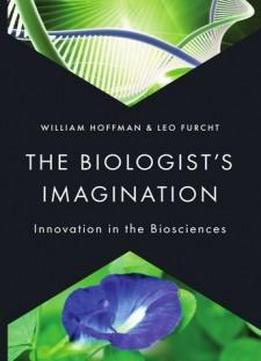
The Biologist's Imagination: Innovation In The Biosciences
by William Hoffman /
2014 / English / PDF
3.3 MB Download
Scholars and policymakers alike agree that innovation in the
biosciences is key to future growth. The field continues to shift
and expand, and it is certainly changing the way people live their
lives in a variety of ways. With a large share of federal research
dollars devoted to the biosciences, the field is just beginning to
live up to its billing as a source of innovation, economic
productivity and growth. Vast untapped potential to imagine and
innovate exists in the biosciences given new tools now widely
available.
Scholars and policymakers alike agree that innovation in the
biosciences is key to future growth. The field continues to shift
and expand, and it is certainly changing the way people live their
lives in a variety of ways. With a large share of federal research
dollars devoted to the biosciences, the field is just beginning to
live up to its billing as a source of innovation, economic
productivity and growth. Vast untapped potential to imagine and
innovate exists in the biosciences given new tools now widely
available.
In
InThe Biologist's Imagination
The Biologist's Imagination, William Hoffman and Leo
Furcht examine the history of innovation in the biosciences,
tracing technological innovation from the late eighteenth century
to the present and placing special emphasis on how and where
technology evolves. Place is often key to innovation, from the
early industrial age to the rise of the biotechnology industry in
the second half of the twentieth century. The book uses the
distinct history of bioinnovation to discuss current trends as they
relate to medicine, agriculture, energy, industry, ecosystems, and
climate. Fast-moving research fields like genomics, synthetic
biology, stem cell research, neuroscience, bioautomation and
bioprinting are accelerating these trends.
, William Hoffman and Leo
Furcht examine the history of innovation in the biosciences,
tracing technological innovation from the late eighteenth century
to the present and placing special emphasis on how and where
technology evolves. Place is often key to innovation, from the
early industrial age to the rise of the biotechnology industry in
the second half of the twentieth century. The book uses the
distinct history of bioinnovation to discuss current trends as they
relate to medicine, agriculture, energy, industry, ecosystems, and
climate. Fast-moving research fields like genomics, synthetic
biology, stem cell research, neuroscience, bioautomation and
bioprinting are accelerating these trends.
Hoffman and Furcht argue that our system of bioscience innovation
is itself in need of innovation. It needs to adapt to the massive
changes brought about by converging technologies and the
globalization of higher education, workforce skills, and
entrepreneurship.
Hoffman and Furcht argue that our system of bioscience innovation
is itself in need of innovation. It needs to adapt to the massive
changes brought about by converging technologies and the
globalization of higher education, workforce skills, and
entrepreneurship.The Biologist's Imagination
The Biologist's Imagination is both a
review of past models for bioscience innovation and a
forward-looking, original argument for what future models should
take into account.
is both a
review of past models for bioscience innovation and a
forward-looking, original argument for what future models should
take into account.











